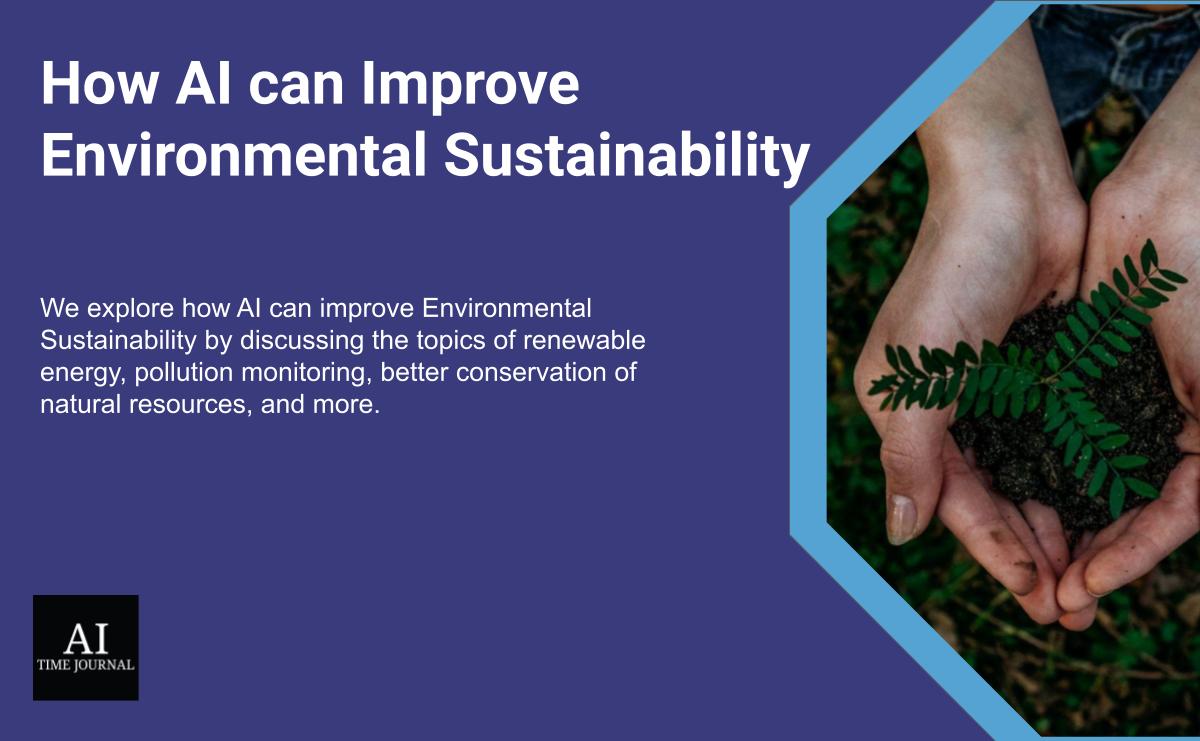
With AI’s undeniable rising popularity, it will be applied to a myriad of industries and will be leveraged for a variety of causes such as environmental sustainability. As the field of AI continues to thrive, companies with massive ecological impressions can leverage the field’s power to make serious changes to our world as we know it.
If anything, right now is a historic time in Artificial Intelligence. With advancements in Big Data, Hardware, and emerging powerful AI Algorithms, it seems like all the pieces are coming together to make huge changes to our everyday lives. Saving planet earth (including the ocean) doesn’t seem as hard as it used to be because of these advancements!
In this article, we explore 5 different ways that artificial intelligence can aid in improving the current state of environmental sustainability.
Renewable Energy & Clean Fuels
Artificial intelligence can apply powerful predictive capabilities and intelligent grid systems to manage the supply and demand of renewable energy. For example, more accurate weather forecasts can optimize efficiency, cut costs, and unnecessary carbon pollution generation. Furthermore, it can improve energy storage, efficiency, and load management, and assist in the integration and reliabilities of renewables. In turn, this will facilitate dynamic pricing and trading, resulting in market incentives.
IBM has already applied the use of AI for optimizing their weather forecasting, resulting in a 30% improvement in their predictions. Their results showcase better management of their plants, maximizing renewable energy production, and reducing carbon emissions.
Electric Vehicles
With the rise of companies like Tesla and increasing gas prices, more companies are paying closer attention to the EV (Electric Vehicle) market. In 2021, gas prices hit the highest average nominal price since 2014 due to rising crude oil prices and increased demand for gasoline. The average U.S. retail price of gasoline sits at an average of 3.01 dollars per gallon in 2021 and that price has continued to increase. The environmental benefits of switching over to an EV are glaringly obvious. Some of those benefits include:
- Reduction of traffic congestion and air pollution
- Improvement of supply chain logistics, such as the transport of cargo
- Warrant more autonomous driving capability
The main benefit of EVs is their direct impact on the environment. Greenhouse Gas (GHG) emissions by cars are thought to be the main source of climate change, not to mention the negative health issues it can onset, such as respiratory problems. The Environmental Protection Agency (EPA) states how EVs impart less GHG emissions across the duration of their lifespans, including both tailpipe and upstream emissions. A fully electric vehicle emits zero tailpipe emissions.
Better Conservation of Natural Resources
The Organization for Economic Co-operation & Development (OECD) released a study that stated 62 Billion tons of natural resources, such as minerals, wood, metals, etc, gets extracted from the earth…Every! Single! Year! As if that isn’t bad, the study also states that 20% of those resources are completely wasted. So clearly, we have an issue with resourcefulness.
A major hub for the extreme use of resources in cities. Over half the world lives in an urban area and this is a trend that is not stopping anytime soon. This rapid growth of cities has introduced pressing environmental stresses in these regions specifically.
One popular way that the conservation of resources has already taken place is through Smart LED Lighting. Compared to traditional forms of lighting, Smart LED lighting provides a much more resourceful use of energy and it also lasts much longer too. This has been applied to street lights.
The smart technology behind this idea, known as Smart Grids, can also monitor the conditions resulting in the light being dimmed or made brighter. A smart grid, also known as ‘electricity with a brain’, is an electrical grid system that delivers energy efficiently, securely, and reliably. It contains a variety of operational and energy measures such as renewable energy resources, smart meters, smart appliances, and more.
Sustainable Land Use
Artificial intelligence integrated with satellite imagery can sense changes in land use, vegetation, forest cover, and the fallout of natural disasters. Early detection of crop diseases and issues is possible through the use of AI-augmented agriculture via robotics.
This system involves automated corrective measures, automated data collection, and decision-making. It also helps with streamlining agricultural inputs and returns based on supply and demand resulting in an improved resilience to climate extremes, increased resource efficiency of the industry, and a reduction in the use of water, fertilizers, and pesticides – all things that devastate important ecosystems.
Pollution Monitoring & Early Detection
Did you know that 92 percent of the global population lives in regions with dangerous levels of air pollution? Making air pollution the 4th largest threat to humanity! Air pollution is something everybody tends to glance over. But, there are so many different parts of the world that suffer from massive amounts of air pollution, sometimes even making it unsafe to be outside for long periods.
There are now air purifiers with an integrated artificial intelligence system that can record air quality and environmental data in real time and adapt the filtration efficiency. Additionally, in urban areas, warnings can be sent to people with AI-powered simulations, regarding the pollution levels in their areas. This allows for pollution sources to be detected much earlier than before. Lastly, air pollution can also be improved through the use of data gathered from vehicles, data sensors, and cameras.
